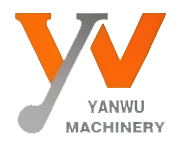Why Use a Roll Forming Machine for BLADE Production?
Blade production is a critical process in various industries such as manufacturing, agriculture, and machinery. Producing blades that are both precise and durable demands advanced manufacturing techniques. Utilizing a Roll Forming Machine can revolutionize this process by providing consistent quality, enhanced productivity, and cost savings. This article explores why a roll forming machine is the optimal choice for blade production.
Consistent Quality and Precision
Maintaining Uniform Blade Profiles
Achieving uniform thickness and shape is essential for blade performance. A roll forming machine precisely shapes metal coils through a series of rollers, ensuring every blade produced adheres to exact specifications. This consistency is vital for blades that must fit perfectly within equipment or cutting tools.
Minimizing Material Waste
Traditional blade production methods often generate significant scrap. In contrast, a roll forming machine controls metal deformation accurately, minimizing waste. This precision reduces raw material costs and supports sustainable manufacturing practices by conserving resources.
Increased Production Speed and Capacity
Continuous and Automated Operation
A roll forming machine facilitates continuous metal feeding and forming, enabling high-speed production without frequent stops. This continuous operation boosts throughput and shortens lead times, allowing manufacturers to meet large order demands efficiently.
Seamless Integration with Automation
Modern roll forming machines can be integrated with automated cutting, stacking, and packaging systems. This integration streamlines production workflows, reduces manual labor, and minimizes errors, resulting in increased overall efficiency.
Versatility and Customization
Adaptable to Various Blade Types
Blade manufacturers often require diverse blade profiles and sizes. Roll forming machines offer flexible tooling systems that can be adjusted or replaced to produce a variety of blade shapes, from simple flat blades to intricate serrated or curved designs.
Compatibility with Multiple Materials
Roll forming machines accommodate a wide range of materials, including stainless steel, carbon steel, and aluminum alloys. This material flexibility enables manufacturers to select optimal materials that meet performance and budgetary requirements.

Durability and Long-Term Cost Efficiency
Robust Construction and Reliability
Designed with durable components and precision engineering, roll forming machines provide consistent, long-term performance. Their sturdy construction minimizes downtime and maintenance, leading to cost savings over time.
Reduction in Labor and Defect Costs
Automation of the blade forming process lowers reliance on skilled labor and decreases the risk of human error, which often leads to defects or rework. This reduces operational costs and improves profitability.
Conclusion – The Smart Investment for Blade Production
Incorporating a Roll Forming Machine into blade manufacturing enhances precision, increases production speed, and reduces costs. Its versatility and adaptability make it suitable for a wide range of blade types and materials, supporting manufacturers in meeting evolving market demands.
Choosing a roll forming machine is not only a technical upgrade but a strategic business decision that enables manufacturers to remain competitive and scalable in the long run.
FAQ
What types of blades can be produced with a roll forming machine?
Roll forming machines can produce flat, serrated, curved, and custom-profile blades.
How does a roll forming machine minimize material waste?
By precisely controlling metal deformation and cutting, roll forming significantly reduces scrap compared to traditional manufacturing methods.
Can different materials be used in blade production with a roll forming machine?
Yes, most roll forming machines handle stainless steel, carbon steel, aluminum alloys, and other metals.
What production speeds can be expected with a roll forming machine?
Depending on the machine and blade complexity, speeds can exceed 20 meters per minute for continuous blade production.

 EN
EN



















